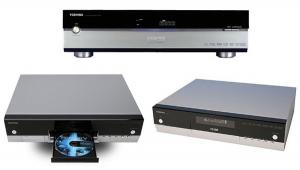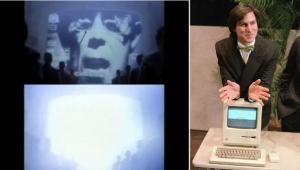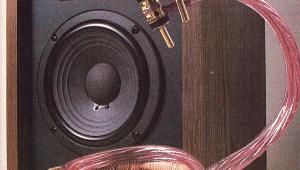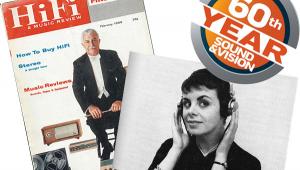Flashback 1914: Transcontinental Phone Line Finished

That final connection linked four copper wires suspended on 130,000 poles in 13 states and made possible the first transcontinental call by Theodore Vail, president of American Telephone & Telegraph (AT&T) who called from New York City to San Francisco. The historic test call passed without fanfare because AT&T decided launch coast-to-coast phone service in early 1915 with a public event that would precede the opening of Panama-Pacific Exposition, a world’s fair celebrating the completion of the Panama Canal and showcasing San Francisco’s recovery from the devastating earthquake of 1906.
On January 25, 1915 the company staged a huge celebration around a call between telephone inventor and AT&T co-founder Alexander Graham Bell in New York City and his longtime assistant Thomas A. Watson in San Francisco. Bell spoke the same words he used in 1877 when he made the first telephone call: “Mr. Watson, come here. I want you.” Watson replied, “Sorry Mr. Bell, it will take me a week now.” New York mayor John Mitchel exchanged greetings with San Francisco mayor James Roth and U.S. President Woodrow Wilson congratulated everyone from the White House. AT&T president Theodore Vail also chimed in with greetings from Jekyll Island, Georgia.
A historical marker in Wendover, Nevada on old U.S. Hwy 40 memorializes the event. It reads:
On June 17, 1914, AT&T erected the last of some 130,000 poles at Wendover, and the wires were spliced, joining more than 3,400 miles of telephone line. This splice connected the first telephone line from the East Coast to the West Coast across the United States. The completion of the first trans-continental telephone line was accompanied with little fanfare. The last splice was made, flags were placed on the cross-poles, and photographs were taken.A BRIEF HISTORY
The AT&T Corp. was formerly known as the American Telephone and Telegraph Corporation. The company that became AT&T began in 1875. Inventor Alexander Graham Bell had an arrangement with Gardiner Hubbard and Thomas Sanders to become partners and the financiers of his inventions. Bell was trying to invent a talking telegraph-telephone. He succeeded, earning patents in 1876 and 1877. In 1877, the three men formed the Bell Telephone Company.TOP PRIORITY
In 1908, AT&T made the transcontinental telephone line their company’s top priority, even though the technology to operate one did not exist. Even with the use of loading coils, telephone communication across countries as large as the United States was not possible without some form of amplification. They needed a scientific breakthrough to amplify the electrical signal. The next year, AT&T raised the stakes when they announced that a transcontinental line would be available to coincide with the 1915 San Francisco World’s Fair — the exposition that would mark completion of the Panama Canal.COAST TO COAST CONSTRUCTION BEGINS
With the emergence of electronic amplifiers, the transcontinental telephone communication became truly possible. The amplifier was the first high-vacuum tube triode, adapted from independent inventor Lee de Forest’s Audion or three-element vacuum tube. In 1912, AT&T began construction of the line, working east from Sacramento.By 1913, AT&T had tested high-vacuum tubes on the long-distance network. In the fall of the same year, construction began on the line west from Denver, with upgrades to the east. Nationally, phone wires were being strung to link the country as the telegraph and railroads had done in the 1860s. The span between Salt Lake City and Wendover was a problem. At times the working temperature was 130 degrees, and the glare made working in the daytime almost impossible. On June 17, 1914, the final pole was set and wires strung at Wendover to complete the first transcontinental phone line in the United States.
FIRST COAST TO COAST VOICE COMMUNICATION
The first test of the transcontinental telephone line took place in July of 1914. The president of AT&T, Theodore Vail, spoke from one coast to another. Along the way, his voice was boosted in Pittsburgh, Pennsylvania; Omaha, Nebraska; and Salt Lake City, Utah.There was one problem: AT&T had completed the line six months before the Panama-Pacific Exposition was ready. So, the company waited until January 25, 1915, then opened the line commercially with a huge celebration and great fanfare. Four locations participated in the call. Cofounder of AT&T and telephone inventor, Alexander Graham Bell, leading a group of dignitaries, began the event by speaking from New Your to his longtime assistant, Thomas A. Watson in San Francisco. Bell spoke the same words into the phone that he had first transmitted via telephone in 1877: “Mr. Watson, come here. I want you.” Thomas Watson replied, “Sorry Mr. Bell, it will take me a week now.” That reply was certainly appropriate, for Mr. Bell in New York was talking to Mr. Watson in San Francisco, where he had awaited this historic call. A short time later, U.S. President Woodrow Wilson congratulated everyone from a phone at the White House in Washington, D.C. AT&T President Theodore Vail spoke from Jekyll Island, Georgia.
The transcontinental telephone line, stretching between New York City and San Francisco, crossed through 13 states. Four copper wires were held up by 130,000 wood poles. On the day of the historic phone call, approximately 1,500 AT&T employees were positioned across the entire length of the line, east to west, including the line between Jekyll Island and New York City. The workers were prepared to fix or repair any problem that might impede the ceremonial phone call.
Mayor John Mitchel of New York and Mayor James Roth of San Francisco exchanged greetings. Mayor Mitchel said: “Hello, Mr. Mayor. As Mayor of New York, which stands at the gateway of the East, I greet you, as Mayor of San Francisco, which stands as the gateway of the West. It is a long way to San Francisco, but I think that by the completion of the transcontinental telephone line our respective cities are now doubly joined together, first by the Panama Canal which joins us together for the rapid passage of maritime commerce, and now by the telephone, which links us together by the power of the human voice.”
FIRST UNDERGROUND CABLE
Twenty eight years later, Wendover made telephone history a second time, when the first transcontinental all-weather buried cable was joined at the border in 1942.
- Log in or register to post comments






























































